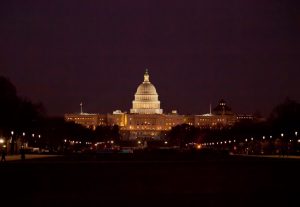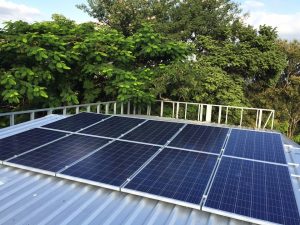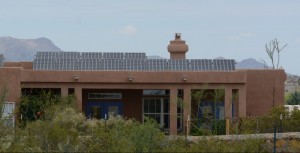6 item(s) were returned.
United States Senator, State of Alaska
Chairman, Senate Energy and Natural Resources Committee
Preface from OurEnergyPolicy In the time since our November 2019 critical minerals discussion, COVID-19 has decimated global supply chains. Factory shutdowns in China, which accounts for 40–50% of the global wind power supply chain, have caused supply shortages of wind turbine components and massive financial losses, threatening current U.S. projects. China’s outsized market share is also affecting the solar market, although some analysts say a U.S. tariff on imported solar panels may have blunted the impact. “If coronavirus has shown us anything, it’s that we are far too reliant on China and other countries for key minerals like… [more]
View InsightThis week, a total solar eclipse crossed the United States for the first time in nearly a century. The eclipse dimmed the sun for several hours, leaving utilities questioning the impact on solar power generation and whether grids are prepared to handle state policies mandating a greater renewable energy mix. As solar output plunged along the route of totality, grid operators and utilities were forced to manage the drop by bringing on greater amounts of natural gas and hydro. Those states with high solar producing capacity, such as California and North Carolina, were significantly impacted by the path of the… [more]
View InsightFormer Clean Energy Project Manager
Environmental Defense Fund
Earlier last month, the New York City Council introduced an energy efficiency bill package designed to make buildings more energy-efficient. Given that about 70 percent of greenhouse gas emissions in the City come from heating and cooling buildings, regulating how buildings manage energy is crucial to reaching Mayor Bill de Blasio’s goal of reducing citywide emissions 80 percent below 2005 levels by 2050. While these bills represent an important step in the right direction, there are opportunities to strengthen them so the intended reduction in pollution is more effective and long-lasting. For example, Int. 1644 proposes the establishment of a… [more]
View InsightEnergy storage, a potential solution for integrating intermittent renewables and improving grid stability, again saw rapid growth this past year. A “transition year” for U.S. energy storage, 2016 saw a more diverse market emerge “both in terms of the types of systems (market segments) deployed and the business models.” These trends are expected to continue in the U.S. with combined residential, commercial, and industrial energy storage deployments predicted to surpass 2 GW by 2021. Despite this rapid growth, there are those who claim that the adoption of storage has been slowed by a “web” of regulations at all levels. Some… [more]
View InsightPrincipal
CACW|Watts
As we continue to debate what the future mix of grid generation will be, we should also critique projections of grid demand that suggest the largest share of future generation will continue to derive primarily from central power sources. Distributed resources like on-site wind, solar, and energy efficiency are filling U.S. power needs in greater amounts every year while also offsetting central generation requirements. The structure of our system is changing in ways many policymakers and investors are not seeing. It would be a mistake to underestimate the potential of clean energy. In 2015, the Energy Information Administration’s (EIA) figures… [more]
View InsightSolar power generation in the U.S. is on the rise with an added 7.3 gigawatts (GW) of total installed capacity in 2015. Demand for solar is projected to increase as much as 119% in 2016. Some believe that growth in the U.S. solar market is primarily influenced by federal and state subsidies and tax credits, such as the Solar Investment Tax Credit (ITC). The ITC is a 30% federal tax credit for residential and commercial solar projects available through 2019. Until recently, state incentives have also impacted the growing U.S. solar market. Nationwide, states have started rolling back tax credits… [more]
View Insight




